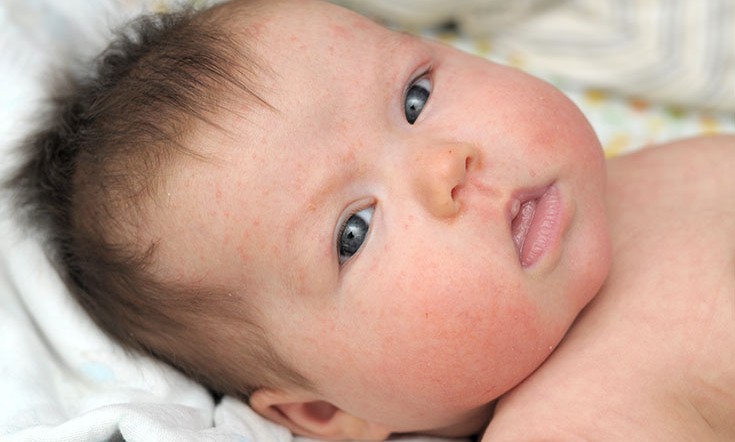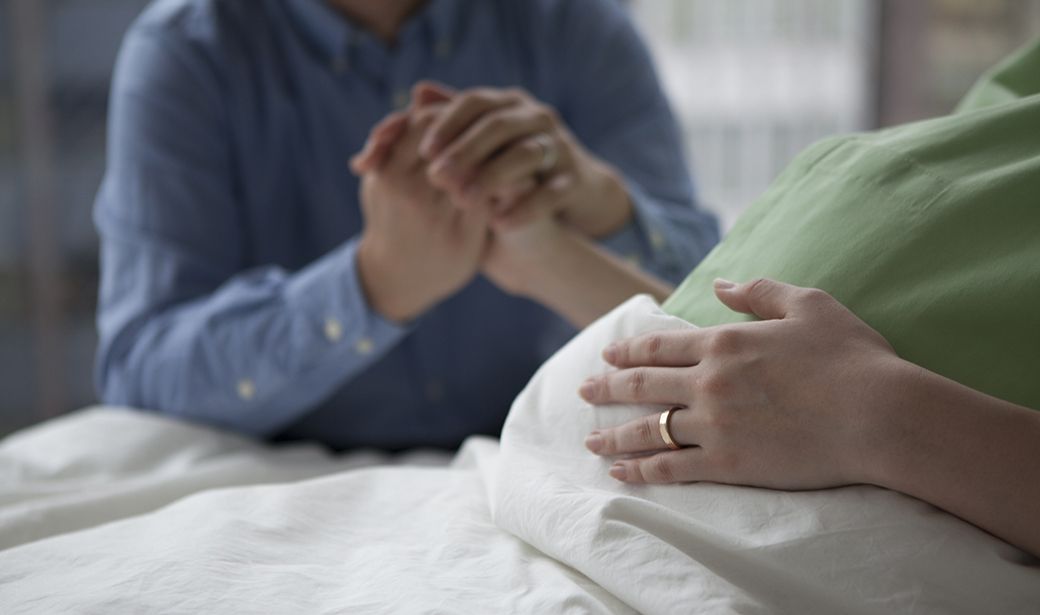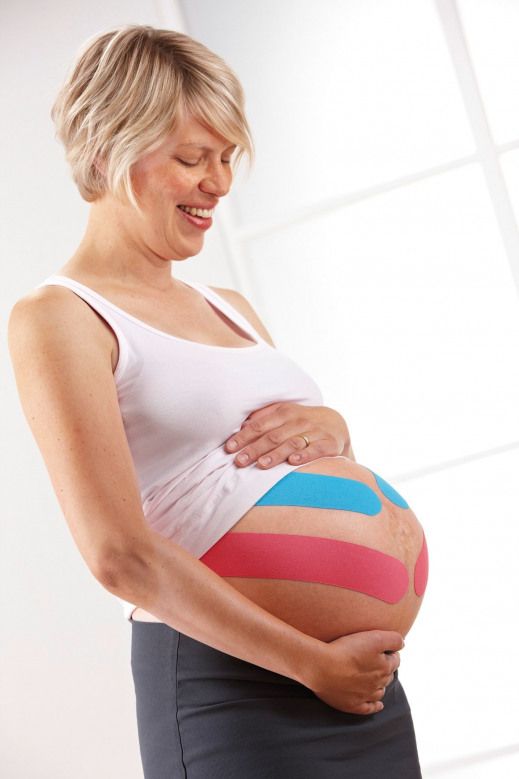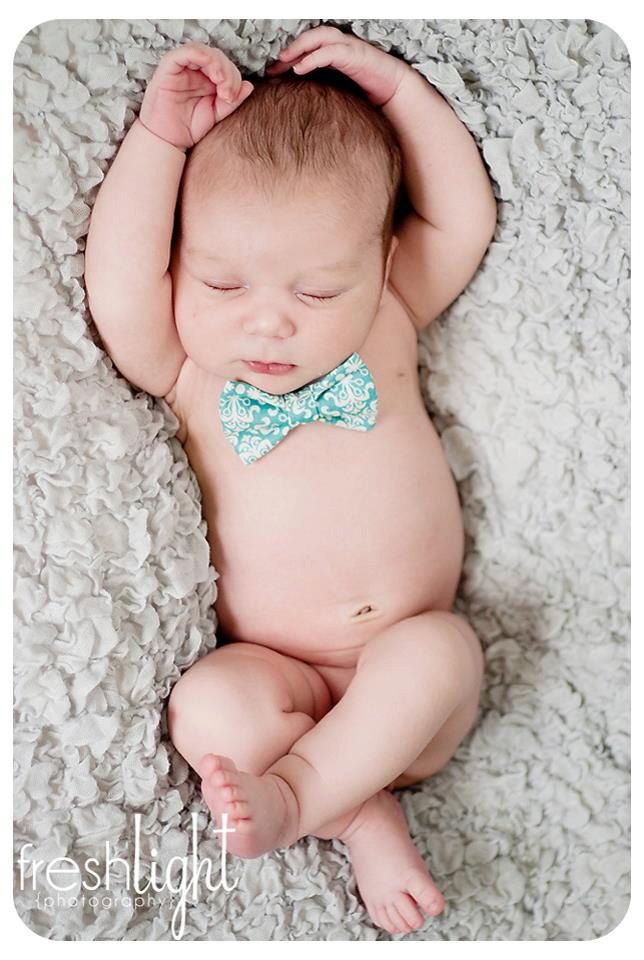Baby has a rash around mouth
How to Prevent and Treat It
We include products we think are useful for our readers. If you buy through links on this page, we may earn a small commission. Here’s our process.
Drooling can be a common side effect of teething, but many babies drool even when they aren’t getting new teeth.
The constant presence of saliva on your baby’s chin, neck, and even chest can turn into a red irritation known as a drool rash. Here’s what you need to know to treat existing drool rashes and prevent new ones from forming.
A drool rash can appear around the mouth and cheeks, in the folds of your baby’s neck, and on your baby’s chest as a result of too much saliva causing wet skin.
Drool rashes typically present as flat or slightly raised patches with small red bumps. They can also have a chapped appearance. Drooling is the most likely culprit, but your baby may develop a drool rash if they use a pacifier that keeps the skin around the mouth wet or if there’s smeared food left on their face for too long.
It can be difficult to keep your baby from drooling.
According to the UCSF Benioff Children’s Hospital, a baby’s salivary glands begin working between 2 and 3 months of age. This can lead to drooling, even though your baby isn’t teething.
To prevent a drool rash, have a soft burp cloth on hand at all times so you can gently wipe away any drool. Keeping your baby’s skin clean and dry is the most effective remedy against drool rash. Wipe your baby’s face and in the folds of his or her neck frequently, and especially after feedings. Use gentle pressure in a dabbing motion to avoid irritating your baby’s skin.
If your baby drools enough to dampen his or her shirt, try using a bib. This will prevent the wet material from rubbing against your baby’s skin, which can lead to uncomfortable chafing and a drool rash.
Change bibs as soon as they become wet with drool to keep your baby’s skin clean and dry.
There are ways to make your baby more comfortable with drool rash.
Twice daily, gently wash the afflicted areas with warm water, then pat dry. Don’t rub, which can be irritating to already sensitive skin. Be sure your baby’s skin is completely dry.
Apply a thin coat of a healing ointment like Aquaphor or petroleum jelly, which will act as a barrier between your baby’s skin and the drool. These ointments can be soothing to your baby’s irritated skin.
At bath time, be sure to use a mild, unscented baby wash. Use a gentle, unscented lotion on your baby’s dry skin if necessary, but avoid using lotion on drool rashes. Skin should be kept dry and treated with a healing ointment. You may consider nonprescription-strength hydrocortisone cream, but ask your doctor how often and for how long to use it.
While your baby has a drool rash, it’s a good idea to reduce potential irritants in the immediate environment. Avoid making your baby’s rash worse by switching to a fragrance-free laundry detergent for your baby’s clothing, sheets, bibs, and burp cloths.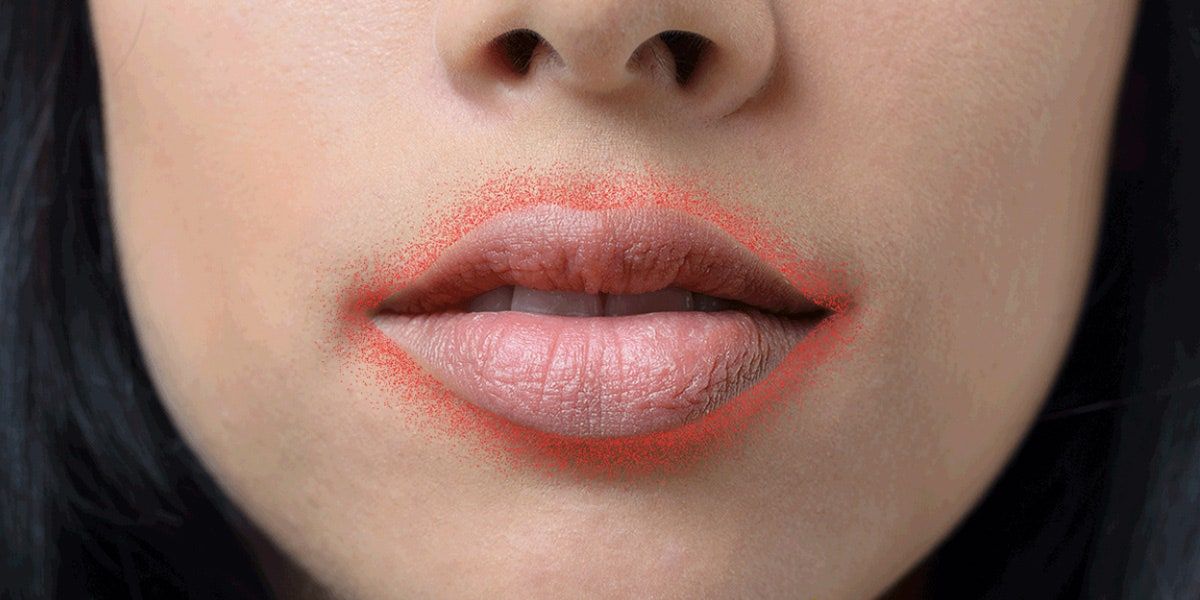 Consider washing your clothing in the same detergent. Avoid perfumes and scented lotions as well. They can also be aggravating to your baby’s rash.
Consider washing your clothing in the same detergent. Avoid perfumes and scented lotions as well. They can also be aggravating to your baby’s rash.
If you suspect that teething is triggering your baby’s excessive drooling, offer something cold (but not frozen) for your baby to gum. Try a teething ring or a cold washcloth. The coolness will have a mild numbing effect on your baby’s sore gums and any rash around their mouth. Be sure to gently pat dry your baby’s mouth afterward.
In most cases, drool rash is a minor irritation that will go away with regular at-home treatment. There are a few instances when it’s best to consult your pediatrician:
- if the rash is cracked, weepy, or causing your baby pain
- if the rash doesn’t show any improvement after roughly a week of home treatment
Your doctor may be able to prescribe creams that can help your baby’s drool rash heal faster and reduce your baby’s discomfort.
How to Prevent and Treat It
We include products we think are useful for our readers.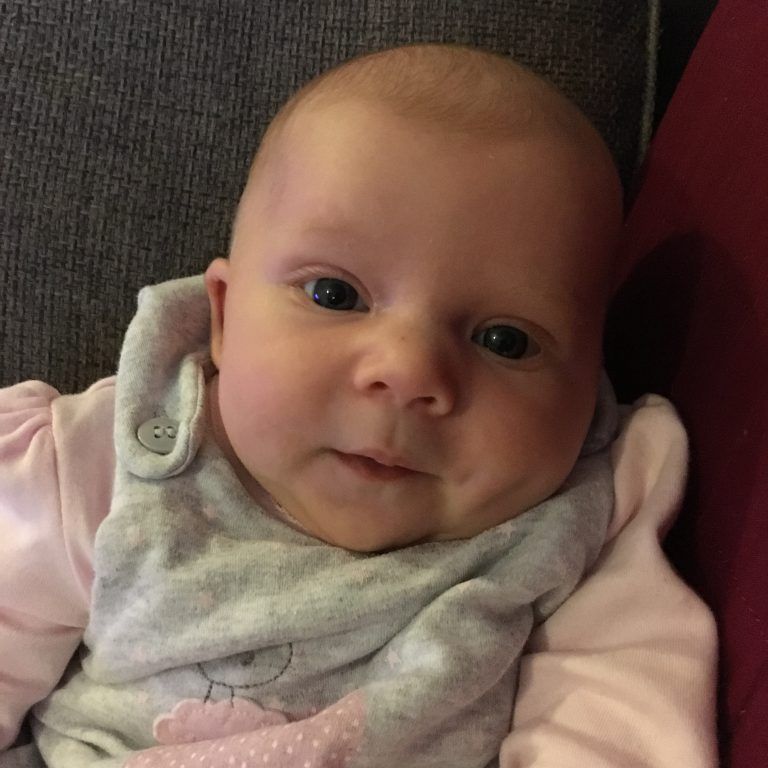 If you buy through links on this page, we may earn a small commission. Here’s our process.
If you buy through links on this page, we may earn a small commission. Here’s our process.
Drooling can be a common side effect of teething, but many babies drool even when they aren’t getting new teeth.
The constant presence of saliva on your baby’s chin, neck, and even chest can turn into a red irritation known as a drool rash. Here’s what you need to know to treat existing drool rashes and prevent new ones from forming.
A drool rash can appear around the mouth and cheeks, in the folds of your baby’s neck, and on your baby’s chest as a result of too much saliva causing wet skin.
Drool rashes typically present as flat or slightly raised patches with small red bumps. They can also have a chapped appearance. Drooling is the most likely culprit, but your baby may develop a drool rash if they use a pacifier that keeps the skin around the mouth wet or if there’s smeared food left on their face for too long.
It can be difficult to keep your baby from drooling.
According to the UCSF Benioff Children’s Hospital, a baby’s salivary glands begin working between 2 and 3 months of age. This can lead to drooling, even though your baby isn’t teething.
This can lead to drooling, even though your baby isn’t teething.
To prevent a drool rash, have a soft burp cloth on hand at all times so you can gently wipe away any drool. Keeping your baby’s skin clean and dry is the most effective remedy against drool rash. Wipe your baby’s face and in the folds of his or her neck frequently, and especially after feedings. Use gentle pressure in a dabbing motion to avoid irritating your baby’s skin.
If your baby drools enough to dampen his or her shirt, try using a bib. This will prevent the wet material from rubbing against your baby’s skin, which can lead to uncomfortable chafing and a drool rash.
Change bibs as soon as they become wet with drool to keep your baby’s skin clean and dry.
There are ways to make your baby more comfortable with drool rash.
Twice daily, gently wash the afflicted areas with warm water, then pat dry. Don’t rub, which can be irritating to already sensitive skin. Be sure your baby’s skin is completely dry.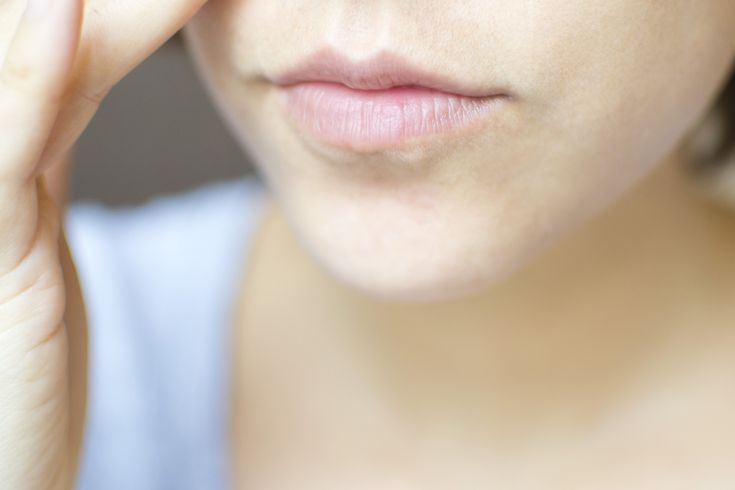
Apply a thin coat of a healing ointment like Aquaphor or petroleum jelly, which will act as a barrier between your baby’s skin and the drool. These ointments can be soothing to your baby’s irritated skin.
At bath time, be sure to use a mild, unscented baby wash. Use a gentle, unscented lotion on your baby’s dry skin if necessary, but avoid using lotion on drool rashes. Skin should be kept dry and treated with a healing ointment. You may consider nonprescription-strength hydrocortisone cream, but ask your doctor how often and for how long to use it.
While your baby has a drool rash, it’s a good idea to reduce potential irritants in the immediate environment. Avoid making your baby’s rash worse by switching to a fragrance-free laundry detergent for your baby’s clothing, sheets, bibs, and burp cloths. Consider washing your clothing in the same detergent. Avoid perfumes and scented lotions as well. They can also be aggravating to your baby’s rash.
If you suspect that teething is triggering your baby’s excessive drooling, offer something cold (but not frozen) for your baby to gum.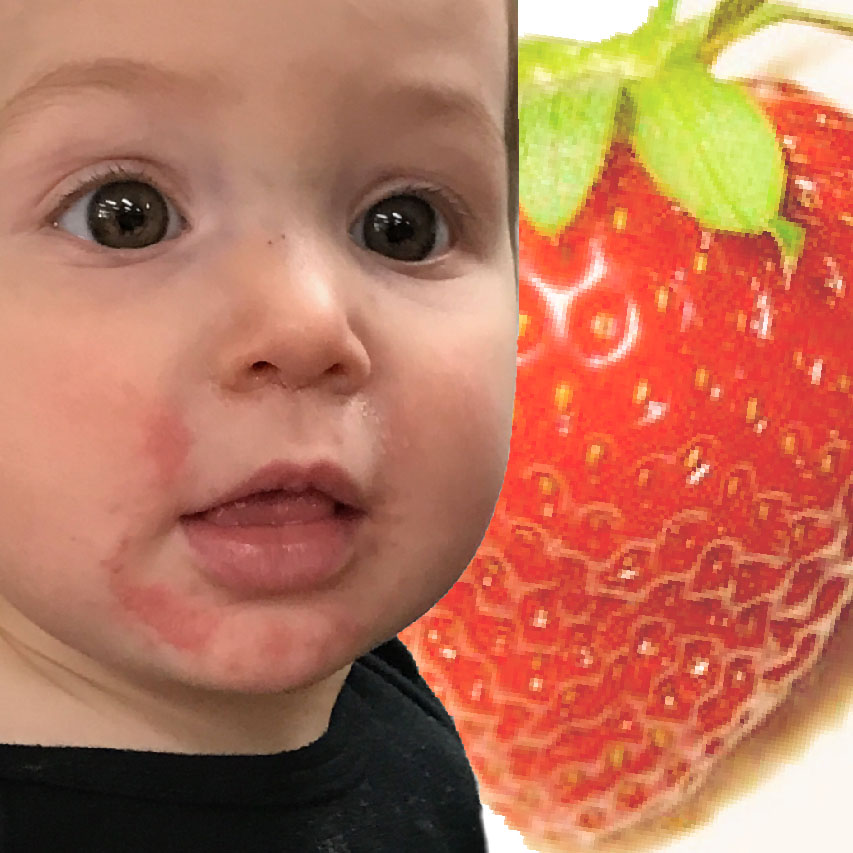 Try a teething ring or a cold washcloth. The coolness will have a mild numbing effect on your baby’s sore gums and any rash around their mouth. Be sure to gently pat dry your baby’s mouth afterward.
Try a teething ring or a cold washcloth. The coolness will have a mild numbing effect on your baby’s sore gums and any rash around their mouth. Be sure to gently pat dry your baby’s mouth afterward.
In most cases, drool rash is a minor irritation that will go away with regular at-home treatment. There are a few instances when it’s best to consult your pediatrician:
- if the rash is cracked, weepy, or causing your baby pain
- if the rash doesn’t show any improvement after roughly a week of home treatment
Your doctor may be able to prescribe creams that can help your baby’s drool rash heal faster and reduce your baby’s discomfort.
Perioral Dermatitis - BIOSPHERE - Beauty Industry Experts
04/08/2020
“Recently I noticed that a few small red pimples formed on my chin - I began to use the
acne cream and wash my face more often, but this only made it worse. Within a few weeks, the skin around the mouth and on the chin became just red, and the pimples kept appearing
and appearing, the skin began to peel off and become covered with crusts - if you heard something like this from your client, most likely it is about perioral dermatitis.
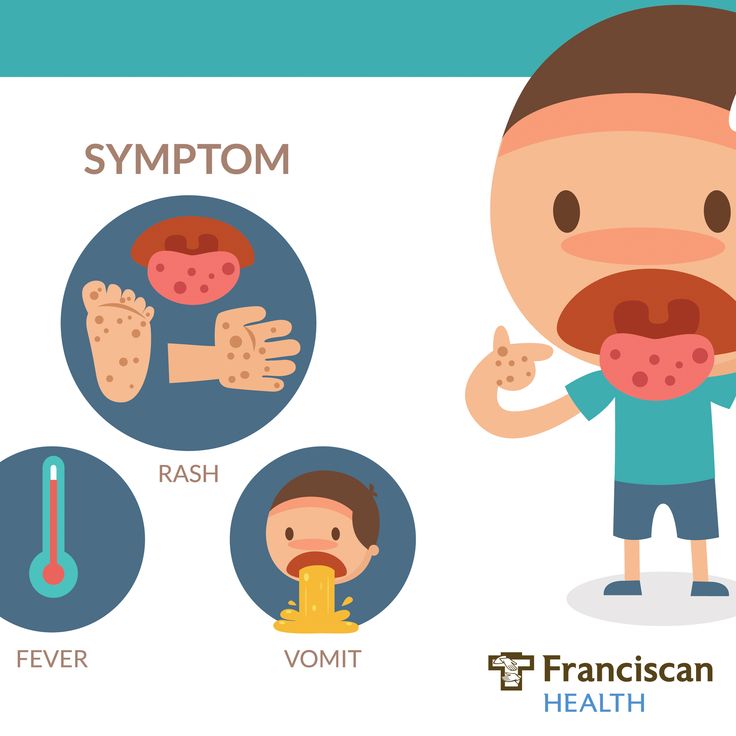
Signs and causes of appearance
Perioral dermatitis is an inflammatory skin disease characterized by the appearance of erythema (redness), against which small papular or papulo-vesicular rashes and peeling appear. Typical localization - the area around the mouth, chin, less often - the periorbital region. A characteristic sign of dermatitis is the presence of intact skin in the immediate vicinity of the red border of the lips. Sometimes rashes are accompanied by a burning sensation, tightness, soreness. More common in women
aged 20-40.
Perioral dermatitis must be differentiated from the following diseases:
1. Rosacea . With rosacea, the process develops gradually: at first, hyperemia appears, then papules, pustules, etc. Perioral dermatitis develops quickly and has no staging. The presence of telangiectasias is characteristic only for rosacea.
2. Seborrheic dermatitis . Rashes are more often localized on the scalp, the border of hair growth, eyebrows, eyelashes, the mustache and beard area, nasolabial folds, the skin of the external auditory canals and behind the ear areas and are accompanied by the appearance of shiny, greasy yellowish scales.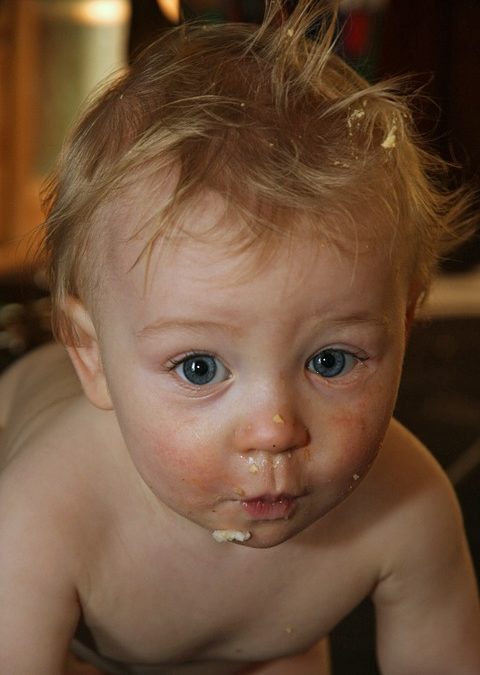 The feeling of itching is characteristic. It occurs more often in men.
The feeling of itching is characteristic. It occurs more often in men.
3. Acne (acne) . Erythema is usually absent. The skin of the face is oily, with a large number of comedones and conical papules. It often occurs at a younger age.
4. Contact dermatitis . There is a connection between the onset of the disease and exposure to irritants and allergens. The main difference is a pronounced itching, not characteristic of perioral dermatitis.
Factors contributing to the development of perioral dermatitis:
- Uncontrolled use of glucocorticoids (creams, ointments and other products)
- Regular use of dense decorative cosmetics and cosmetic products
with an occlusive effect
- Excessive sun exposure including the use of contraceptives), diseases of the gastrointestinal tract
– Carrying out aggressive cosmetic procedures (peelings, laser resurfacing, etc.)
without proper preparation and rehabilitation
- Decreased immunity, increased sensitivity to bacterial agents (mites of the genus Demodex, fungi of the genus Candida)
Treatment, correction and prevention
When prescribing treatment, it is necessary to take into account the severity of the disease.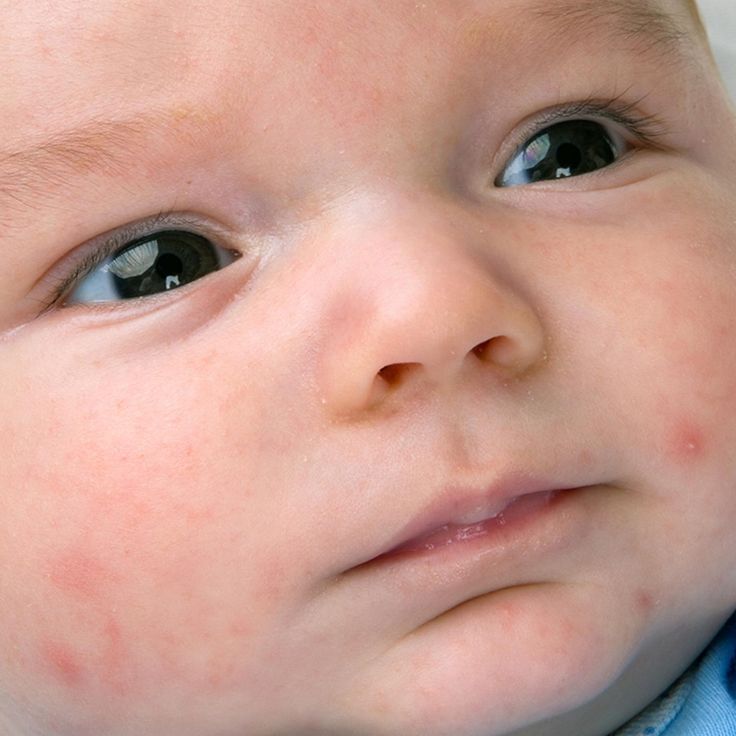 In mild stages, start with "null therapy". Exclude the use of corticosteroids (external
In mild stages, start with "null therapy". Exclude the use of corticosteroids (external
and systemic). Stop using cleansing and moisturizing cosmetics (except for special ones), decorative cosmetics, fluoridated toothpastes. A hypoallergenic diet is recommended. Eggs, fish, sausages, canned food, citrus fruits, carrots are excluded
and red pepper, coffee, alcoholic drinks. It is important to comply with the drinking regime, the normalization of sleep, sufficient physical activity. If there is no effect within 2 weeks or in a more severe course, topical agents based on azelaic acid
and metronidazole are used (prescribed by a doctor). Perhaps the appointment of antihistamines and sedatives. In severe cases, systemic antibiotic and retinoid therapy is used.
For the correction, prevention and elimination of the consequences of perioral dermatitis, Light soothing cream EGIA . The cream has a pronounced soothing
and anti-inflammatory effect, does not contain components that irritate the skin.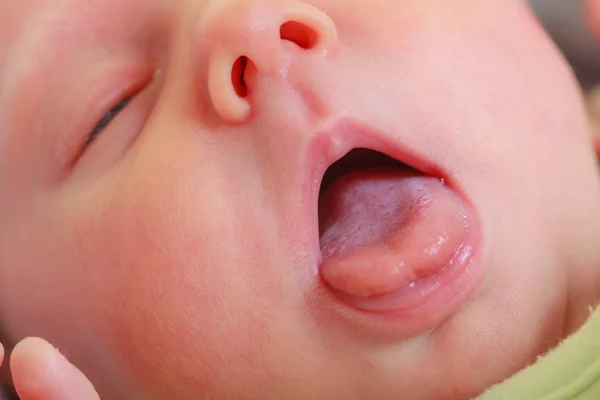 Light emulsion texture, lack of occlusive and comedogenic effect allows its use during the rehabilitation period after suffering dermatitis, including
Light emulsion texture, lack of occlusive and comedogenic effect allows its use during the rehabilitation period after suffering dermatitis, including
and perioral.
Light soothing cream
Take care of your baby's skin
The skin of babies and children is much more fragile and sensitive than adults. Many mothers are wondering how to properly care for their skin. child to be as healthy as possible. To keep skin healthy baby and protect the skin from irritants, parents should be vigilant and careful in choosing care products.
There is a difference between the needs of the skin of a newborn baby, baby up to 3 years and a child from 3 to 10-12 years. As a general rule, children and infants should not use hygiene products and skin care products intended for for adults.
What are the features skin of babies and children?
"Skin like a baby" is an expression commonly used when talking about about soft and velvety skin, but this is not entirely true. At birth, the baby's skin is already fully formed, but it is thinner and more vulnerable, than an adult, and is not able to effectively perform its barrier function. A few weeks after birth, the baby's skin stops producing sebum, and the sebaceous glands in the skin are not activated until adolescence. Thus, the hydrolipidic layer becomes thinner, and therefore less its barrier function becomes effective. As a result, the skin becomes drier and more susceptible to pathogens and allergens.
At birth, the baby's skin is already fully formed, but it is thinner and more vulnerable, than an adult, and is not able to effectively perform its barrier function. A few weeks after birth, the baby's skin stops producing sebum, and the sebaceous glands in the skin are not activated until adolescence. Thus, the hydrolipidic layer becomes thinner, and therefore less its barrier function becomes effective. As a result, the skin becomes drier and more susceptible to pathogens and allergens.
The skin of babies and toddlers is highly absorbent, so all products applied to children's skin, are absorbed and enter the bloodstream faster than adults. Therefore, for the hygiene of the child's skin, it is important to use gentle products, which guarantee very good tolerability and have a high level safety while meeting strict production requirements.
Children's skin and atopic dermatitis
Various external irritants such as wind, cold, hard water and heating, weaken the skin of the child, make it more dry and reactive.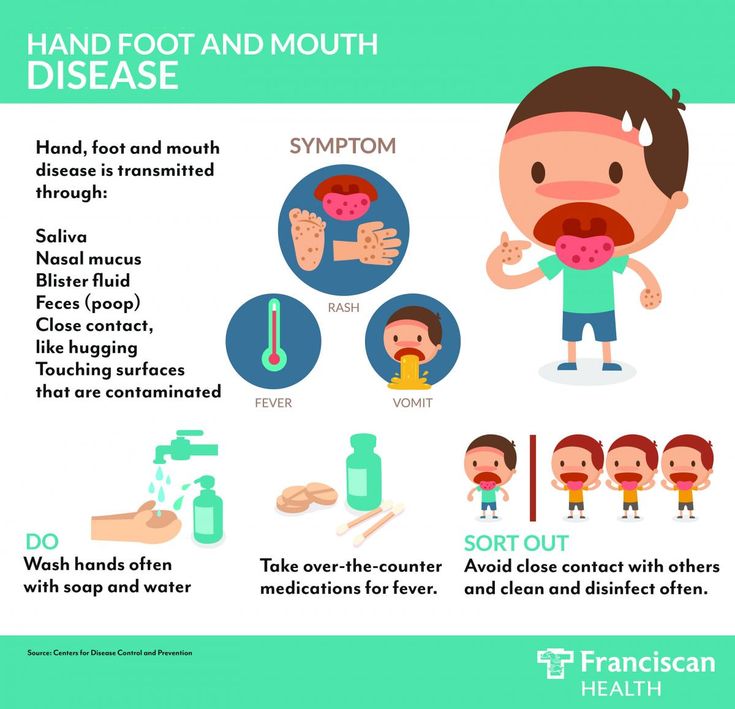 With atopic dermatitis the child's skin is very dry and rough, sometimes with red spots. Leather becomes itchy, the child's sleep is disturbed.
With atopic dermatitis the child's skin is very dry and rough, sometimes with red spots. Leather becomes itchy, the child's sleep is disturbed.
Atopic dermatitis is a very common type of dermatosis that can start in the second or third month of life and in most cases disappears after some years. Atopic skin suffers from increased permeability of the horny layer due to lipid deficiency and therefore ceases to properly perform a barrier function. This causes inflammation and an outbreak of atopic dermatitis, most often accompanied by severe itching.
When scratching the affected areas, wounds are formed that are harmful skin. Children's skin becomes more permeable to allergens. atopic dermatitis occurs in two successive phases - exacerbation (spots, itching, risk of infection) and remission (symptoms improve but skin remains dry and itchy). There are 3 main types of environmental allergens that are more common cause acute inflammatory reactions in total:
Aeroallergens: dust mites, pollen, mold and fungal spores, wool cats and dogs
Food allergens
Contact allergens: nickel, fragrances
Skin irritation around the mouth
Irritation around the mouth is characterized by redness, small pimples, dryness and roughness. Perioral dermatitis occurs around the mouth under the influence of profuse salivation, with prolonged use of a pacifier, thumb sucking, or during teething teeth. The enzyme amylase, which is found in saliva, increases irritation. In winter, perioral dermatitis is aggravated by cold and wind.
Perioral dermatitis occurs around the mouth under the influence of profuse salivation, with prolonged use of a pacifier, thumb sucking, or during teething teeth. The enzyme amylase, which is found in saliva, increases irritation. In winter, perioral dermatitis is aggravated by cold and wind.
How to care for the skin of babies and children?
1. Daily attention
Pay attention to risk areas: face, skin around the mouth, the area under the diaper and all the folds on the skin.
· Always consult your pharmacist or pediatrician when choosing your care products.
Avoid wool and synthetics when choosing tight clothing.
Make sure that the air in the room where the baby, not too dry, and the air temperature does not exceed 20 ° C.
2. Hygiene
Use a mild hygiene product, do not containing soap that protects the skin child and does not irritate the skin and eyes. When bathing a child, make sure that the temperature of the water in the bath was not higher than 35 ° C, as heat increases dryness skin.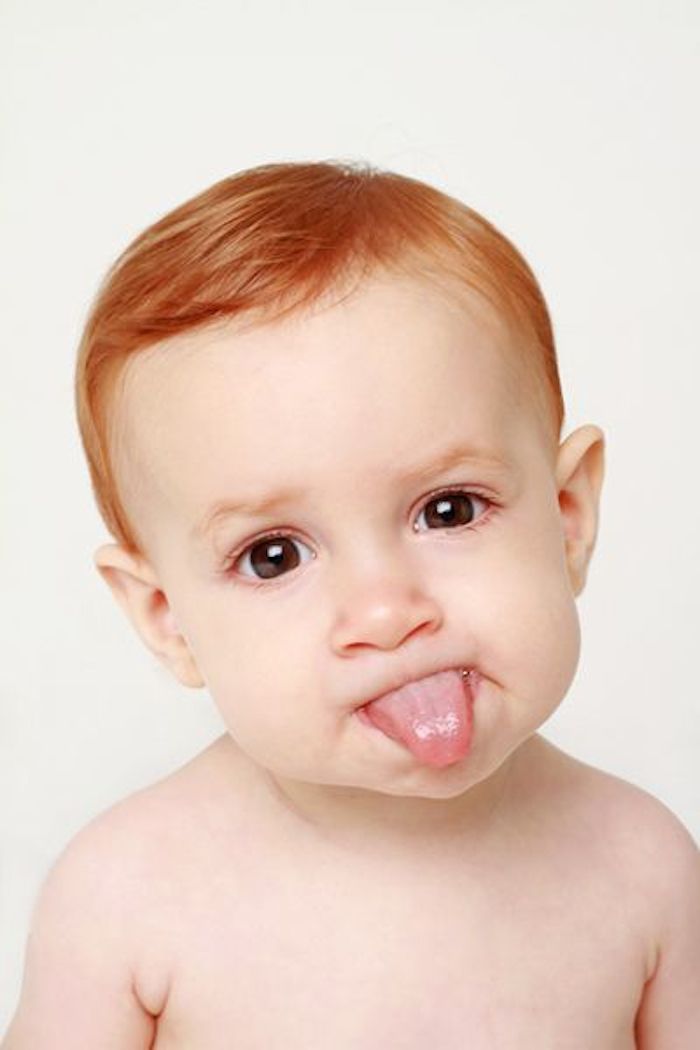
Dry skin thoroughly and gently after bathing baby with a soft towel, paying special attention to the folds.
Then apply moisturizer to baby's delicate skin cream with very high tolerance.
To cleanse the skin of a child's face, you can use cotton pads and soap-free hygiene products such as micellar water. it help to avoid contact with the city hard water, which can irritate the skin.
3. Care
The skin of babies and children is very delicate, so it is important to learn how to properly protect it from external stimuli. Use moisturizing and nourishing creams or milks with a high level of safety and portability.
If the child has normal skin, daily Apply a moisturizing milk that nourishes and protects the skin.
If your skin tends to be dry, choose extra nourishing creams that restore the barrier function of the skin, prevent itching and provide instant comfort.
BIODERMA ABCDerm - baby and baby skin care
special cleaning and care products. To support and restore the natural physiological balance of the delicate skin of babies, BIODERMA has created a line of 9 products0077 ABCDerm , suitable for infants from birth (excluding preterm infants) children).
To support and restore the natural physiological balance of the delicate skin of babies, BIODERMA has created a line of 9 products0077 ABCDerm , suitable for infants from birth (excluding preterm infants) children).
To wash the body, face and hair of a child, use ABCDerm Gel Moussant - gentle cleansing gel, soap-free, which maintains the integrity of the skin barrier. In addition, it forms a light foam for a pleasant bathing baby.
To moisturize the skin use ABCDerm Hydratant - gentle moisturizer milk that creates a protective layer and strengthens the natural skin barrier, and also limits factors that cause irritation.
For daily cleansing use micellar water ABCDerm h3O or micellar wipes ABCDerm h3O Lingettes which are very convenient and practical when you the baby is away from home. Extra gentle micellar water supports natural balance, soothes and softens the skin.